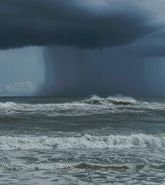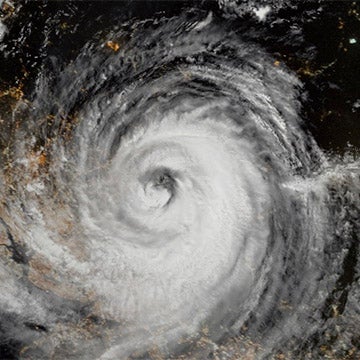A version of this blog was published in The Insurer.
With some 30 years passed since Hurricane Andrew made landfall as a Category 5 storm on August 24, 1992, near the city of Homestead, Dade County, what can we say has changed over this period? What has gotten better, and what has gotten worse?
We start with what has gotten better. First is science and technology. In 1992 insurers relied on the experience of the last Category 5 storm in the market – such as the 1935 Labor Day storm that skirted Florida’s Gulf Coast. Without a historical Category 5 event reference for Miami-Dade, the estimation of potential losses from an event such as Andrew turned into a guessing game.
Losses exceeded predictions with US$15 billion in claims (US$50 billion in 2021 prices), and as the limitations of these prevailing approaches came to light, according to the Insurance Information Institute, eight insurers became insolvent following Andrew. Others were technically insolvent, and state legislators had to intervene to shore up the insurance industry to prevent non-renewal.
Confidence to move forward was required and catastrophe modelers started to utilize science that could quantify unprecedented physical events within the realm of reasonable possibility.
Modelers such as RMS started to account for building-specific characteristics and its vulnerability to hurricanes, and the growing population density and subsequent exposure along the coastlines. This confidence spread with the rapid growth of eight new reinsurers in Bermuda who adopted the use of catastrophe models squarely in their business plans.
The Risk Laboratory
The second area of improvement was state regulation (but this is also on the negative side later). Florida has turned into a living “risk laboratory,” where legislation and new innovations are developed, trialed, and implemented, with many other states adopting what they regard as best practices from Florida.
There has been a huge focus on mitigation, and understanding how mitigation measures help to reduce loss, which is recognized in risk modeling. Strengthened building codes in South Florida sees new homes built with resistance to wind speeds up to 180 miles per hour, and a minimum of 120 miles per hour across the state. To accommodate the new codes, a wealth of approved building products is on the market together with buildings inspected by trained officials.
To fill the immediate reinsurance gap after the market seized up post-Andrew, in 1993 the state created the Florida Hurricane Catastrophe Fund (FHCF) with a structure based on modeling results, including RMS models.
In 1995, the Florida Commission on Hurricane Loss Projection Methodology (FCHLPM) was formed, an independent body developing standards and reviewing hurricane loss models used in the development of residential property insurance rates and the calculation of probable maximum loss levels.
And as the private market struggled to deliver for homeowners, Citizens was founded in 2002, a union of the Florida Windstorm Underwriting Association (FWUA) and the Florida Residential Property Casualty Joint Underwriting Association (FRPCJUA), to step in and provide backup insurance. Some 20 years after Andrew, the Florida insurance market had rebalanced, and new entrants were established – including within Florida.
In many ways, Florida became a model state in terms of its determination to deliver for its citizens in terms of a healthy insurance market with increased hurricane resilience.
Now here’s what has gotten worse. First – is the escalation of the risk, driven by factors such as climate change, the rising population, and exposure at risk, and second is a legislative environment that is making it difficult for insurers to focus on delivering insurance when it matters most, during a catastrophic event.
Growing Exposure
On all measures, Florida is growing strongly. Florida’s population in 1992 was 13.69 million, in 2022 it is 22.13 million, a 61 percent increase, making it the third most populous state.
Using the RMS® ExposureSource Database, 1.91 million buildings are currently within Andrew’s wind footprint, and 55,456 within its storm surge footprint. Since 1992, building counts have increased by 40 percent and 32 percent in the wind and surge footprints consecutively.
Economic exposure has also increased by 77 percent in the wind footprint, and 67 percent within the surge footprint. The number of buildings over 15 stories in Miami-Dade has tripled since 1992, many of which are in Andrew’s surge footprint.
Some 4.2 million homes were bought in Florida coastal counties between 2000-2020, and 258,000 units bought were less than a quarter mile from the coast. These homes were on average just nine and a half feet above sea level. Sea level rise for Miami Beach could rise by over 13 inches between 2020 and 2050. Miami is around six feet above sea level.
In addition to sea level rise, “nuisance” or “Sunny Day” flooding is becoming a daily occurrence, and tidal flooding has increased 352 percent since 2000. King tides are a foot higher than normal tides, and during a hurricane, a severe storm surge will become a 10-year event, rather than a 100-year. As seen with Hurricane Harvey in Texas, flood can be a key loss driver, as climate change can exacerbate both precipitation and wind speed.
Another Andrew-style event will be more severe in terms of impacts – be it wind, flood, and/or storm surge. There is more exposure in low-lying vulnerable areas, and the exposure is of higher value.
A new RMS article suggests losses for a new Andrew event could top US$100 billion. According to the track of the storm relative to the exposure concentrations in southeast Florida, the physical loss alone could be double that of the original Hurricane Andrew.
But what of the cost of those additional factors that have developed since 1992, what gets termed social inflation? Seventy-six percent of all lawsuits nationwide against insurers are in Florida, a state that represents just eight percent of policyholders. In 2021, some 100,000 property insurance-related cases were filed in Florida courts.
Insurance Supports Attorneys
Some US$15 billion has been paid by insurers due to homeowners litigation since 2013 in Florida, driven by assignment of benefits cases (AOB) representing a third of new cases and litigation capitalizing on the “25 percent roof replacement” rule, where the insurer can have to pay for a roof to be replaced if just 25 percent was damaged.
The worst part is that homeowners have received less than a tenth of the US$15 billion, 91 percent is absorbed by attorney fees on both sides.
New roofs paid by insurers place a huge strain on the market even without a significant hurricane event, and as premiums rise dramatically, insurers pull out of the state or go insolvent (five so far in 2022 representing over 340,000 policies and US$650 million of direct premiums written). This leaves Citizens taking up the slack – going from 570,000 policies in 2021 to a predicted one million at the end of 2022.
New legislation introduced in July attempts to rein back some of the excesses and create an environment where insurers pay genuine damage claims rather than escalating payouts from the spurious assignment of benefits contractors and hungry lawyers. Lawyers will not give up their insurance income without a fight and we have yet to see how this will play out.
Southeast Florida reflects the largest concentration of hurricane risk worldwide. As such it requires concerted actions to sustain insurability, in particular through the implementation of stringent building codes for wind as well as appropriate investments in flood protection.
Reinsurers are already being more selective in where they are placing capacity due to the increases in risk exposure, challenging carriers to find affordable coverage. It would only take two major hurricane hits close together in time, as happened in 1926 and 1928, to knock out reinsurance capacity and private insurance.
And that would have a devastating impact on the mortgage industry and the Florida economy in general. Few Floridians may realize what a tightrope has to be walked to sustain hurricane insurance in their state.
To finish on a positive note, thanks to advances in catastrophe risk modeling, the insurance industry can analyze and quantify hurricane risk at a resolution that is incomparable to 30 years ago. Understanding wind, flood, storm surge, climate change projections, accurate exposure databases, and individual building vulnerability, insurers can dive into their portfolio risk.
Click here to read the Exposure article "Can the Florida Insurance Market Withstand a US$100 Billion Repeat of Hurricane Andrew?"







